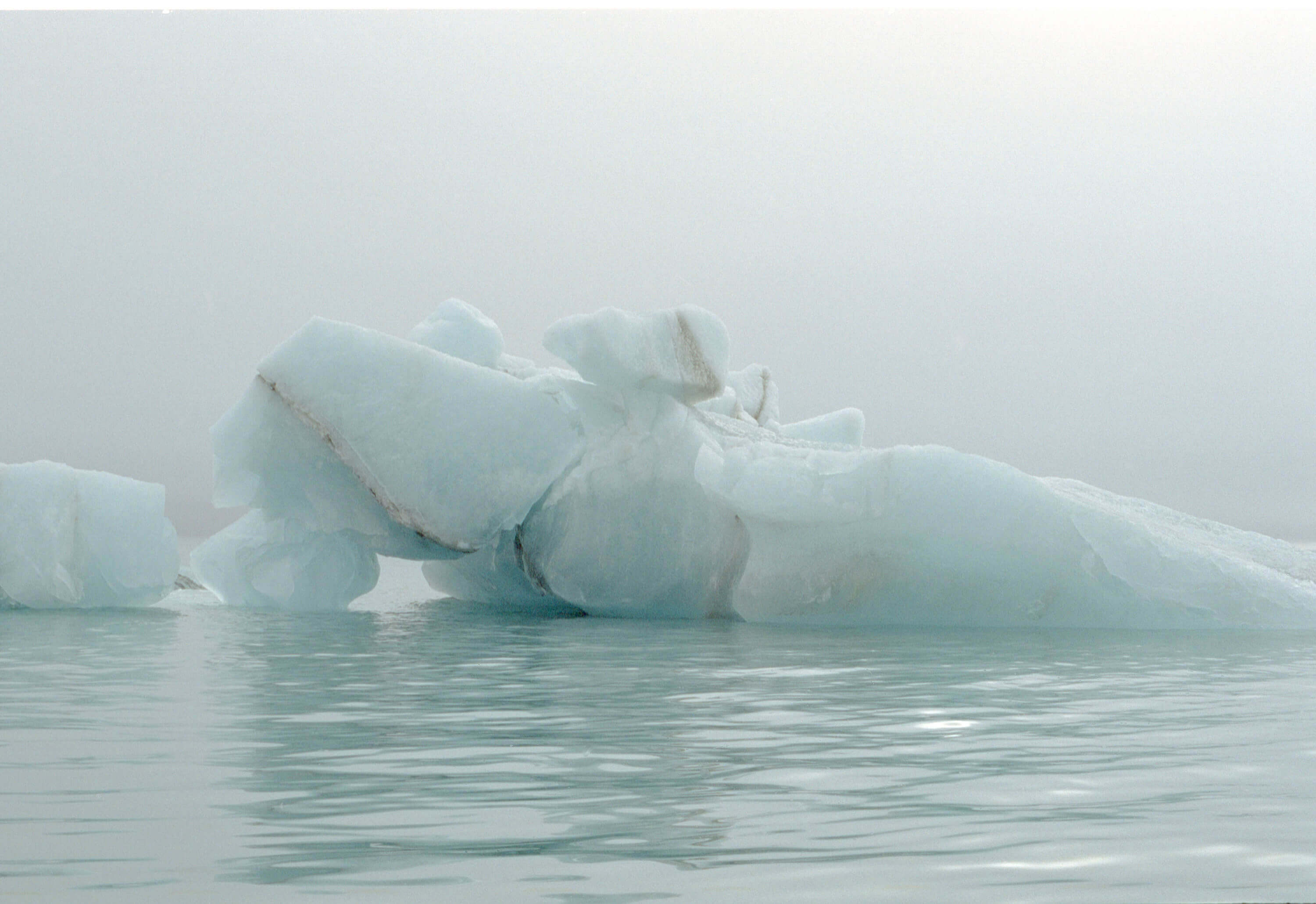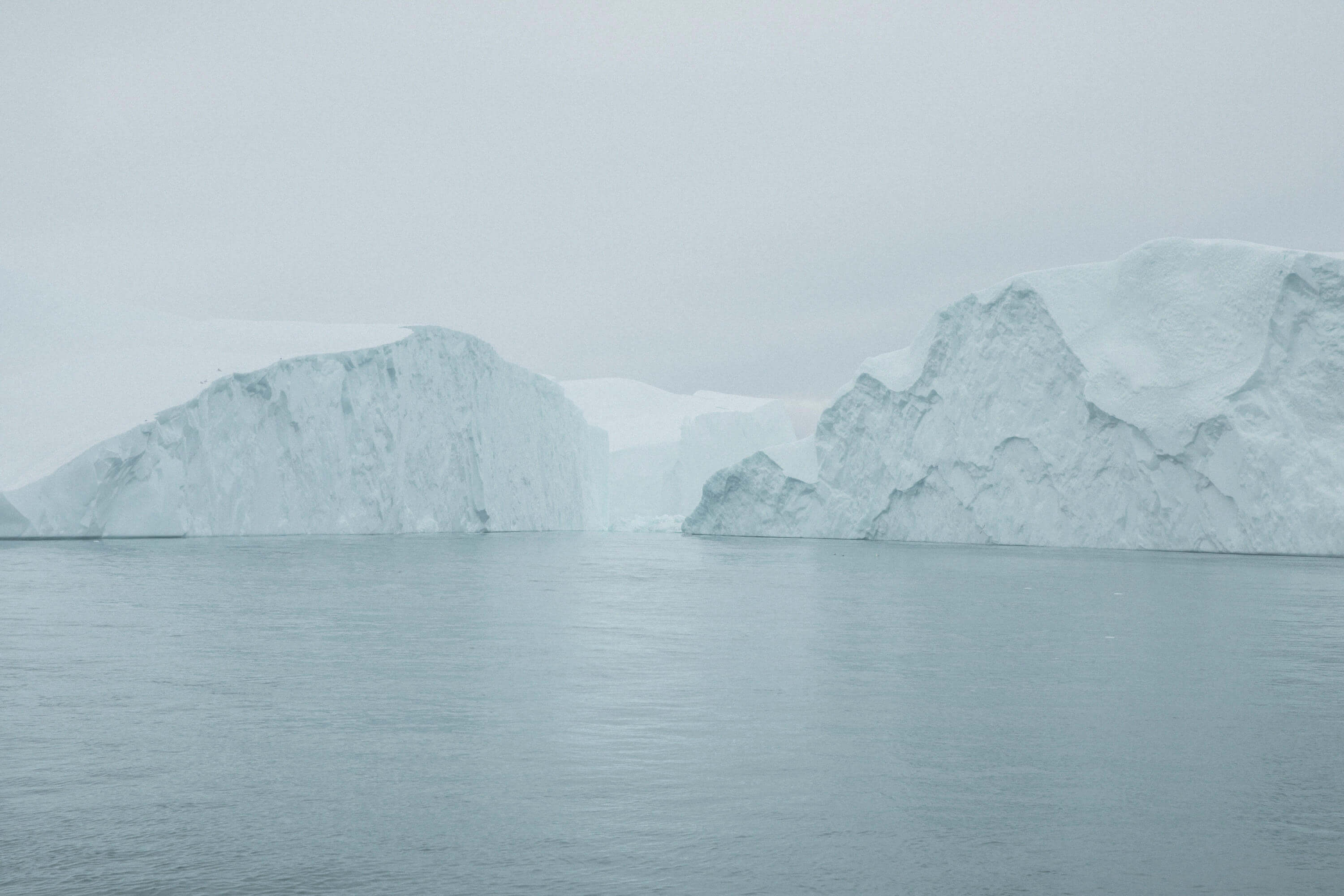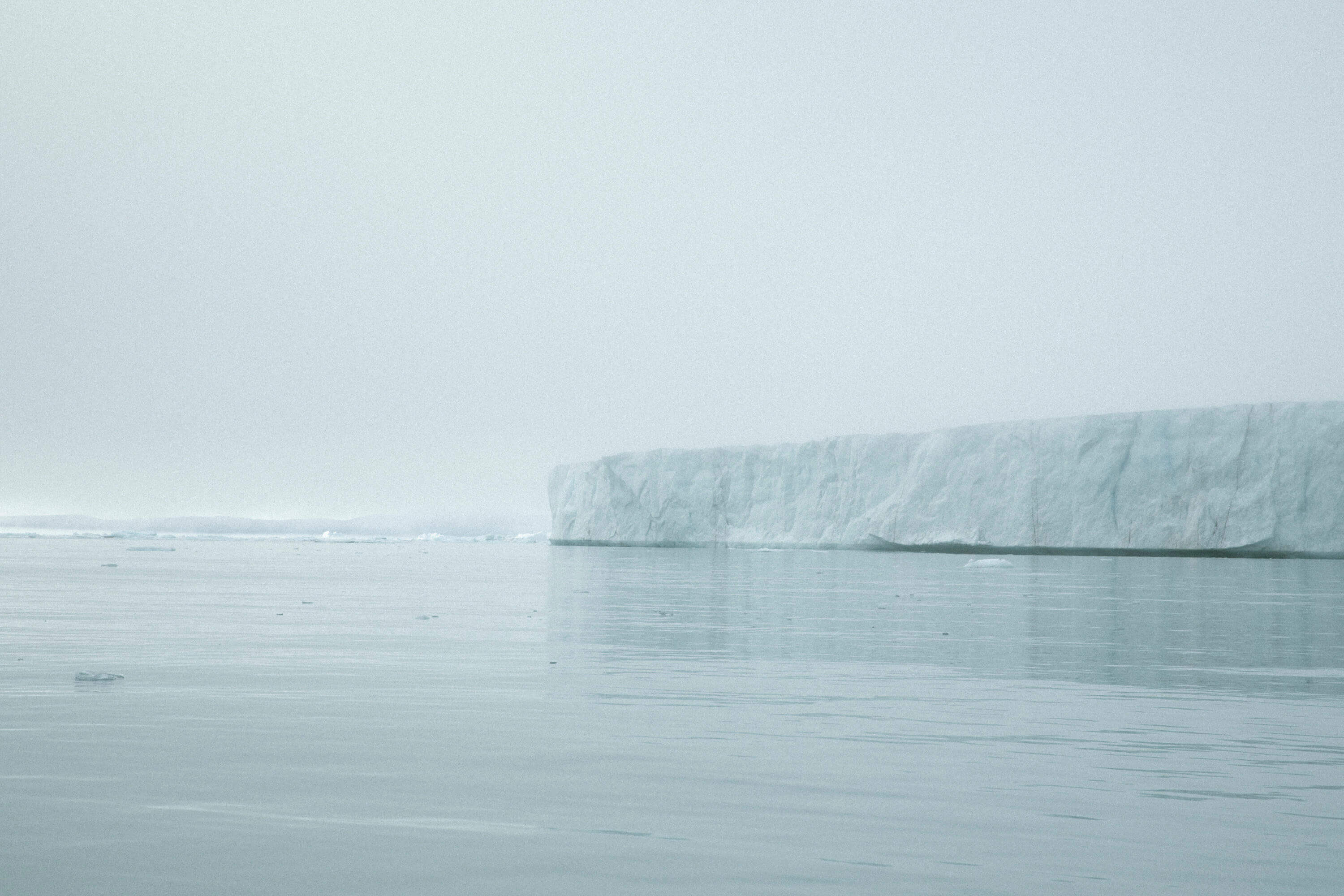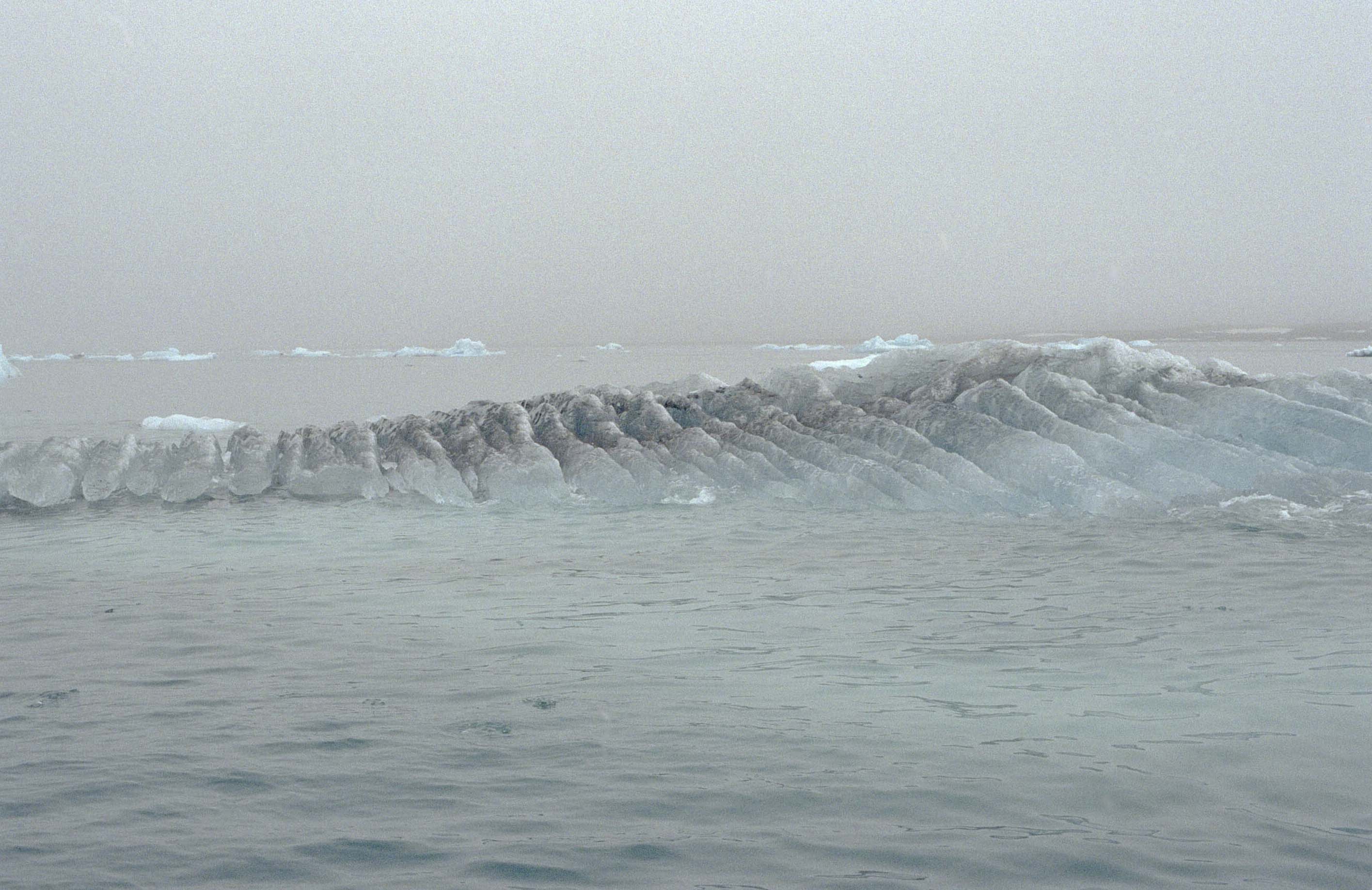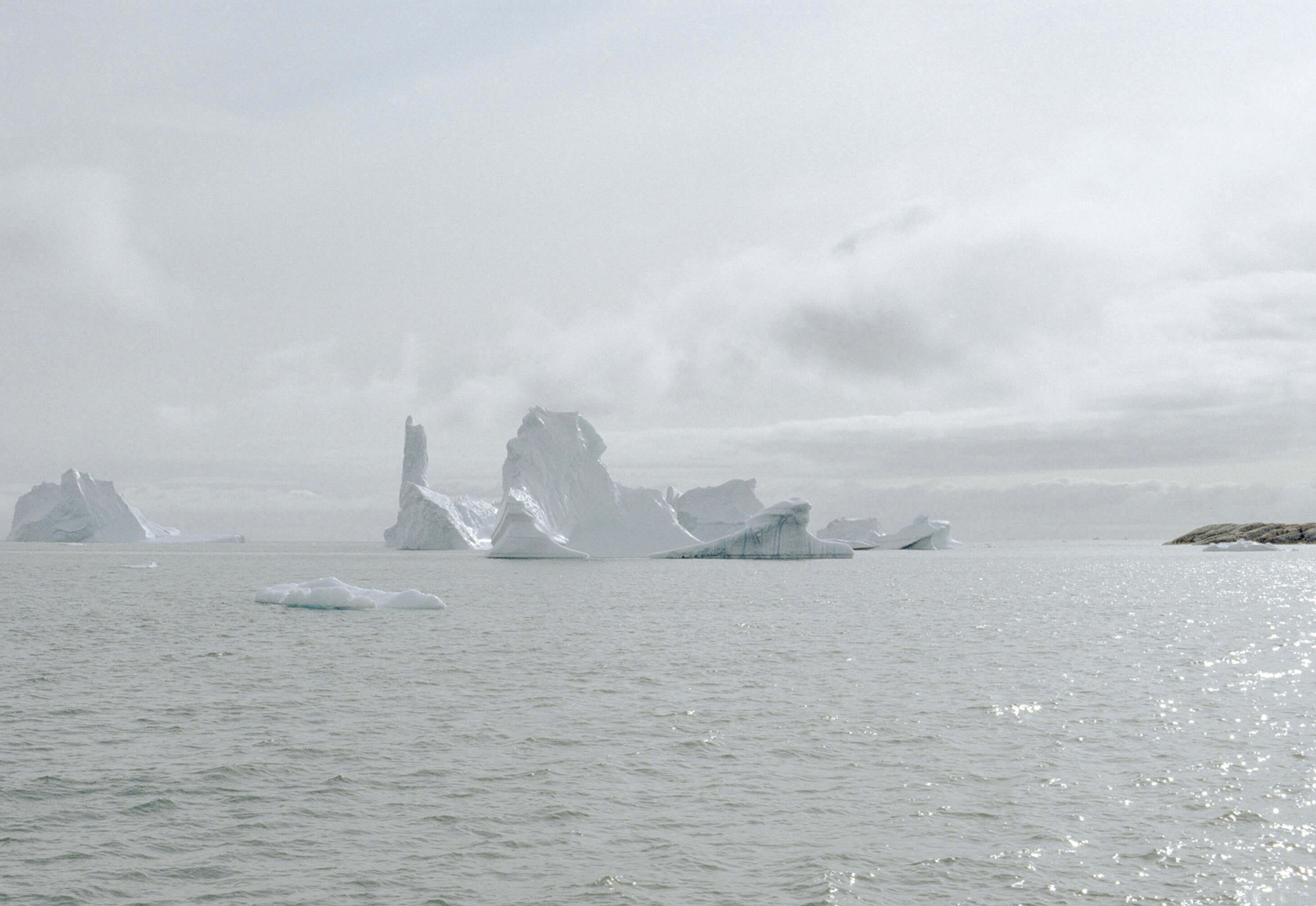They still talked about it in the town, the inhabitants of Ilulissat would still be almost proud of it until the next millennium: the iceberg that sank the Titanic in April 1912 was calved off the Sermeq Kujalleq, the massive glacier that snakes past Ilulissat. Glaciers flow like the slowest of rivers towards the sea, crawling along under their own inhuman weight, bursting the bubbles of area trapped in the layers of compressed snow. With good reason, Ilulissat means exactly that: “icebergs”. The Sermeq Kujalleq produces them like a popcorn machine in an amusement park, and if you are to strain your eyes and ears, you can make out its rhythm and sound. It all began with a snowfall 15,000 years ago, followed by many polar winters, which built up the Titantic iceberg. Once it had made up its mind, it took over a year to break away from the mother glacier and push along the icefjord, and then about another two years to arrive just a few miles away from New York City for the night of the collision. Put in these words, it sounds like an adventure
that had been planned to the letter. Once in the open seas, it had travelled some way northwards, pushed along by the cold waters of Baffin Bay, to then launch its way southwards, taking advantage of the Labrador Current that sweeps along to the southern latitudes of the Atlantic, sometimes even as far as the 41st parallel north, in other words, on a level with yes, New York City, or Istanbul or the Gulf of Asinara in Sardinia.
Half of its great mass had already been lost during its voyage and, at that point, it would have totally melted, it would have disappeared altogether in just fourteen days. Well, that’s what all icebergs do, or at least the bravest ones do, he thought. This “he” is the man-iceberg from Ilulissat. It’s the month of June 1952, the Ilulissat pack has crumbled, and he’s sensed it’s the right time to leave. With a secret move going by the name of Operation Blue Jay, the Inuit community of Thule upped and left and moved to New Thule, a hundred or so kilometres north, to make room for the Thule Air Base, the United States Air Force’s northernmost military base. The Americans pay the Danes for this position.
They call it the Cold War. In Melville Bay the air is so warm and the sea so cocooning that the kayaks will be hauled on the sleds and lowered into the water on the edge of the ice to catch birds and seals and harpoon narwhals. The official Andreas Lund-Drosvad, known as Suko, member of the now decommissioned Syssel Council Chamber of the Danish colony of Upernavik, is making the meeting room into the town museum and at the same time conquering the record for beluga hunting – 4,999 specimens captured with a net – before going back to Denmark for good.
The Earth is in an interglacial period, shortly the whole world at hand will be re-enclosed in a desert of ice, and the “short” time – thousands of years – is precisely what scares geologists and glaciers alike. Add to this that it’s summer and the sea’s only passable for a few months, then it really is a good time to leave. The man-iceberg wants to travel, wants to see temperate worlds, to go even further than those 30 degrees of latitude separating Ilulissat and New York City, if at all possible. He’s a stumpy growler, no elegant swan, but even if just an adolescent iceberg, it’s no reason to be ashamed: being a bit short helps especially if you want to slip down the Kangia icefjord more quickly and not end up grinding to a halt on the bottom. At that point you can always rely on your friends to push. And then there’s the risk that everybody knows, indeed failure might be desperately close. He could end up in the iceberg graveyard in Disko Bay, practically around the corner, like falling into the first hole in pinball without having had the slightest bit of fun. It’s spectacular to watch as a tourist, but if you’re an iceberg that wants to see the world, you’ve not got very far. In short, at a certain point the boy told his old father his plans. He listened to him, understood his intentions and that the passion driving him was sincere, and so he answered: if you want to go, you have to do it in style, you have to reach the top and get further than anyone has ever got before.
Why not the Azores, at a latitude between 36°55’ and 39°44’ north. The fjord’s humpbacks spread the word in that language of theirs that combines words, love and mourning all at once: an iceberg wants to see the world. He set off. Then, one night, as beautiful as all the rest, he was blinded by the flash of a beacon: a long, unbelieving, fidgety strip of white light. Wait a minute, it’s a stage spotlight! He imagined that he would make the news, him and his hijinks right out in the Atlantic Ocean. Instead, it was a luxury liner. It was studying him, wondering how it could gently manoeuvre around him, so as not to wake the man-iceberg or its passengers. Ladies and gentlemen, bon voyage!
Greenland annually tips 281 billion tonnes of ice into the ocean, almost enough to cause the sea level to rise by a millimetre each year. The water comes from the ice sheet that melts and goes into the sea. The Sermeq Kujalleq, or Jakobshavn Isbræ, more and more vulnerable by the year, is the glacier that drains the most. These days it advances forty metres a day, and the front of the glacier is retreating at galloping speed. Ninety per cent of the icebergs along the coasts of Newfoundland and Labrador in Canada come from western Greenland and, in the past, an iceberg really was spotted and recorded drifting as far as the Azores.
